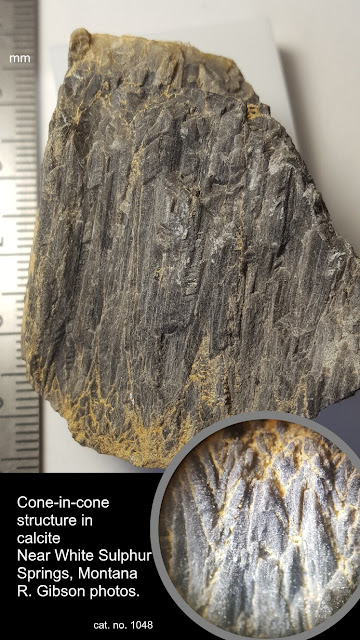The mineral here is just calcite (even though it’s mostly
almost black), but it shows interesting features. Cone-in-cone structures are
nested cones, seen here in cross section. The inset shows them a little better
– in the main photo, they are represented by very narrow vertical triangles.
It’s not certain how these things form, but some kind of
systematic displacement because of microscopic crystal growth variations is
probably the favored idea. The variations might be because of clay content
(which in my specimen might help account for the dark color), or because of
changes in volume when aragonite (chemically identical to calcite, calcium
carbonate, but a different crystal structure with a different volume) changes
to calcite which can happen during diagenesis, the process of sediment
solidifying to rock.
Cone-in-cone might also result from pressure variations,
either before or after the rock becomes solid. Pressure variations that might
depend on the clay content could produce micro-fractures in the calcite that
make the individual crystalline material slide consistently to make the cones.
This more structural interpretation might be supported by the fact that my
specimens are from a seam of calcite about 3 or 4 inches thick that was within
thicker, stronger rocks.
Bottom line, the features are caused by some kind of
microcrystalline displacement, but exactly how this happens is not settled.
This specimen is from near White Sulphur Springs, Montana.
Collected in 2004.
—Richard I. Gibson


No comments:
Post a Comment